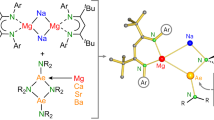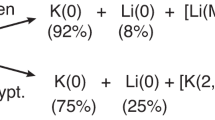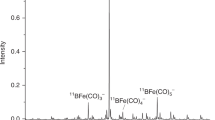Abstract
It is well known that the ion Bi3+ easily reacts with water (is hydrolysed) so that hydrogen ions are set free. Very little is known, however, of the nature of the reaction products. In 1936 Holmqvist2, and Prytz and Nagel4 working independently, concluded that there are certainly not only mononuclear complexes (BiOH2+, BiO+) but also polynuclear complexes containing more than one bismuth atom. Holmqvist even tried to apply the law of mass action assuming definite formulæ, namely, Bi2(OH)2+4 and Bi2(OH)+5.
This is a preview of subscription content, access via your institution
Access options
Subscribe to this journal
Receive 51 print issues and online access
$199.00 per year
only $3.90 per issue
Buy this article
- Purchase on Springer Link
- Instant access to full article PDF
Prices may be subject to local taxes which are calculated during checkout
Similar content being viewed by others
References
Bannister, F. A., and Hey, M. H., Miner. Mag., 24, 49 (1935).
Holmqvist, A., Sven. Kern. Tidskr., 48, 106 (1936).
Lagercrantz, Å, and Sillén, L. G., to be published.
Prytz, M., and Nagel, P., Z. anorg. Chem., 227, 65 (1936).
Sillén, L. G., Naturwiss., 30, 318 (1942).
Author information
Authors and Affiliations
Rights and permissions
About this article
Cite this article
GRANÉR, F., SILLÉN, L. Hydrolysis of Bi3+. Oxygen Bridging—a New Type of Ionic Equilibrium. Nature 160, 715–716 (1947). https://doi.org/10.1038/160715a0
Issue Date:
DOI: https://doi.org/10.1038/160715a0
This article is cited by
-
A novel rechargeable aqueous bismuth-air battery
Science China Materials (2023)
Comments
By submitting a comment you agree to abide by our Terms and Community Guidelines. If you find something abusive or that does not comply with our terms or guidelines please flag it as inappropriate.



